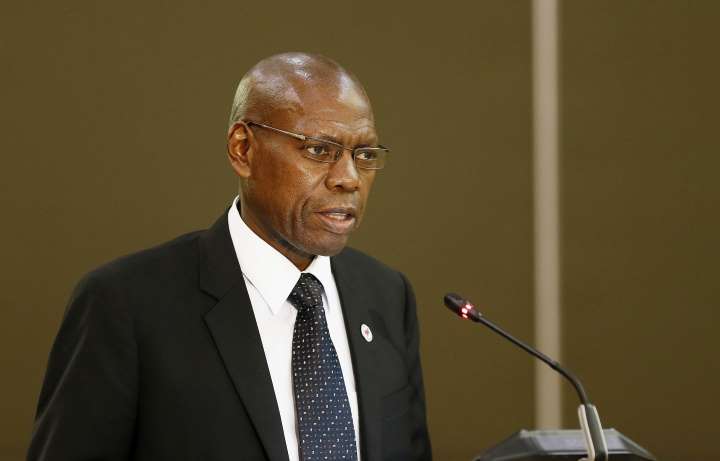As South Africa prepares to enter Level 3 of lockdown amid the COVID-19 pandemic, Minister of Health Dr Zweli Mkhize hosted a briefing to inform citizens of the interventions implemented to fight the virus.
Mkhize said that a large number of coronavirus carriers and fatalities are black persons.
This is in response to numerous queries on the racial profiles of those infected by COVID-19, but these are not readily available as this is not how the data is collected.
The Western Cape has active 8 083 cases of COVID-19, with a total of 18 350 confirmed cases and 9 830 recoveries as of today [May 29].
It was also found that children have a lower risk of transmitting the virus, which played a big part in the decision to allow schools to reopen on Monday, June 1.
A presentation was made by Professor Abdul Karriem, who broke down a number of key factors and interventions in the spread of the virus, and curbing it.
According to Karriem, South Africa is doing well in flattening the curve, but this may have to continue for months or years. This is dependent on whether a vaccine is found for the virus.
The lockdown was a measure implemented not to stop the spread of the virus, but rather to buy more time before the peak of the virus comes.
“South Africa put lockdown in place so quickly because it had learned from other countries,” Karriem said.
#COVID19 Statistics in South Africa as at 29 May 2020. pic.twitter.com/pjWFXDWkD9
— Dr Zweli Mkhize (@DrZweliMkhize) May 29, 2020
Flattening the curve was implemented as a way to ensure that the country’s health facilities would not be overwhelmed as the virus spread. While there is an issue of backlogs with testing, Mkhize attributed this to an admin issue with the National Institute of Communicable Diseases (NCID).
One of the main preparations for the swelling of the curve is the Cape Town International Convention Centre (CTICC) being turned into a field hospital to help ease the strain on medical facilities such as Groote Schuur Hospital and Tygerberg Hospital.
Government has planned for more than 35,000 quarantine beds for #COVID19. #HealthMediaBriefing pic.twitter.com/EpBVKXv27I
— Dr Zweli Mkhize (@DrZweliMkhize) May 29, 2020
The lockdown was put in place to achieve the following:
– flatten the curve in advance
– to slow community transmission
– provide time to better prepare and equip hospitals and health care workers
– to provide time to scale up testing and prevention programmes
According to Karriem, the virus is difficult to stop for a number of reasons. These include the following:
– For a three day period between picking up the virus and displaying symptoms, carriers are pre-symptomatic. This means the virus can be spread to up to thousands of people in a short period as people interact with the carrier before the carrier is aware that they have COVID-19.
– Asymptomic carriers can spread the virus without knowing that they are infected.
– “Superspreaders” may be asymptotic or pre-symptomatic, and spread the virus without knowing they are doing so.
– Repeated waves, which means that even when the pandemic is controlled, there may be flare-ups which cause a spike in infections.
“There are 86 countries that are currently in lockdown or have had lockdowns”, Karriem said.
Karriem also broke down the “COVID-19 toolbox”, which are the measures promoted and implemented by government to curb the spread of the virus. These include:
– social distancing
– hand hygiene practices such as washing hands regularly and for a minimum of 20 seconds
– screenings for symptoms
– cloth masks and coughing etiquette such as coughing into your elbow
– testing, isolation, quarantine and contact tracing
– frequent environmental cleaning
The number of #COVID19 tests done has increased significantly since February. pic.twitter.com/O9rfrkbes6
— Dr Zweli Mkhize (@DrZweliMkhize) May 29, 2020
There are a number of interventions that members of the public have been using to ”ensure the virus is not spread”. One of these includes human disinfection tunnels, where people are sprayed with disinfectants or sanitisers. This is not recommended under any circumstance.
“There is little to no evidence to support the safety of the chemicals used and their side effects are not known,” Karriem said. “Only hands should be sprayed with disinfectants and sanitisers.”
There are also a number of constraints on COVID-19 testing currently. These include:
– A substantial backlog at both private and public labs
– The worldwide shortage of both test and extraction kits
– Testing is prioritised for hospital patients and outbreak areas
“There is no room for complacency,” Karriem said. “The numbers will continue to rise.”
Next, the National Health Laboratory Service (NLHS) made its presentation, which can be summarised as follows:
– the NHLS has upscaled its national capacity in as short amount of time as possible to turn over as many COVID-19 tests as possible per week
– while the demand for testing has been high, they have been increasing their outputs to reduce the backlog
– the NHLS remains committed to delivering quality testing
South African Health Professionals Regulatory Authority (SAHPRA) has received a total of 71 applications for molecular testing kits, and has approved 23. It has also received 164 applications for serological testing kits, as well as laboratory serological testing kits.
Picture: Twitter






